A diagnostic approach to the mediastinal masses
- PMID: 23225215
- PMCID: PMC3579993
- DOI: 10.1007/s13244-012-0201-0
A diagnostic approach to the mediastinal masses
Abstract
Background: Multiple different types of mediastinal masses may be encountered on imaging techniques in symptomatic or asymptomatic patients. The location and composition of these lesions are critical to narrowing the differential diagnosis.
Methods: Radiological compartmentalisation of the mediastinum helps in focusing the diagnosis of masses on the basis of their site. Some diseases, however, do not occur exclusively in any specific compartment and can spread from one compartment to another.
Results: Tissular components of the mass, the degree of vascularisation and the relationships with mediastinal structures assessed by computed tomography (CT) or magnetic resonance imaging (MRI) are a leading edge of the radiological diagnosis. Special applications at MRI have been developed over the recent years in order to identify accurately tissular components of the mediastinal masses. The likelihood of malignancy of the mediastinal masses is influenced by the symptomatology and the age of the patient. This article reviews the most commonly encountered mediastinal masses considering clinical history and manifestations, anatomical position and certain details seen on different imaging modalities that allow correct diagnosis in many cases.
Conclusion: Familiarity with the radiological features of mediastinal masses facilitates accurate diagnosis, differentiation from other mediastinic processes and, thus, optimal patient treatment.
Teaching points: • CT and MRI are important for the diagnosis of mediastinal masses. • The location and tissue characteristics on imaging studies are critical to narrow down the differential diagnosis of mediastinal masses. • Symptomatology and patient age affect the likelihood of malignancy.
Figures

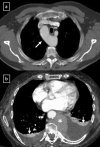


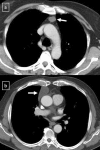























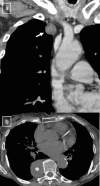

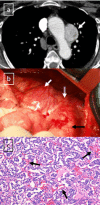
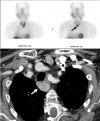


References
LinkOut - more resources
Full Text Sources

